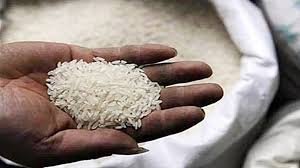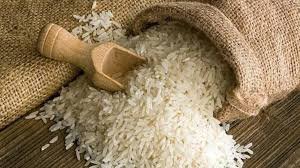Government Removes Floor Price on Basmati Rice: A Detailed Overview
In a significant policy shift, the Indian government has announced the removal of the floor price on basmati rice. This move is expected to have a substantial impact on both domestic and international rice markets. The decision, which marks a notable departure from previous regulations, aims to enhance market dynamics and provide greater flexibility to rice producers and exporters.
Impact on the Rice Market
The removal of the floor price is anticipated to lead to several changes in the rice market. Floor prices, previously set to ensure a minimum income for farmers, will no longer restrict the market dynamics. This change is expected to lead to increased competition and potentially lower prices for consumers. Additionally, exporters may benefit from the removal of price constraints, which could boost India’s competitiveness in the global rice market.
Benefits for Farmers and Exporters
Farmers and exporters are likely to see both positive and negative effects from this policy change. On one hand, the removal of the floor price could lead to better price discovery mechanisms, allowing farmers to negotiate better rates based on market conditions. On the other hand, the absence of a guaranteed minimum price could create uncertainty, particularly in volatile market conditions. The government will need to monitor these impacts closely and consider additional measures to support farmers if necessary.
Government’s Rationale and Future Prospects
The government’s decision to remove the floor price is part of a broader strategy to liberalize agricultural markets and encourage competitive pricing. By eliminating price controls, the government hopes to stimulate growth and efficiency in the sector. However, it will be crucial to assess the long-term effects of this policy on both the domestic market and international trade dynamics.
Conclusion
The removal of the floor price on basmati rice represents a significant shift in agricultural policy. While it offers potential benefits in terms of market efficiency and export competitiveness, it also presents challenges that will need to be addressed through careful monitoring and support mechanisms.

Why this News is Important
Impact on Agricultural Policy
The removal of the floor price on basmati rice signifies a major shift in agricultural policy, reflecting the government’s intent to deregulate and promote market efficiency. This move aligns with broader economic reforms aimed at enhancing the competitiveness of Indian agriculture and integrating it more effectively into global markets.
Effects on Farmers
For farmers, the elimination of the floor price could lead to more dynamic pricing but also introduces risks. The government’s approach is designed to provide greater flexibility but must be balanced with support systems to mitigate potential adverse effects on farmer incomes, particularly in less stable market conditions.
Implications for Exporters
Exporters of basmati rice stand to gain from increased market competitiveness. With the removal of price constraints, Indian basmati rice could become more attractive to international buyers, potentially leading to increased export volumes and improved trade balances.
Consumer Benefits
Consumers may benefit from potentially lower prices due to increased market competition. This policy change could lead to more competitive pricing in the domestic market, making basmati rice more affordable for Indian consumers.
Long-Term Economic Effects
The long-term economic effects of this policy shift will be significant, impacting market dynamics, pricing strategies, and trade balances. Monitoring these effects will be crucial for ensuring that the benefits of deregulation are realized while managing any negative consequences.
Historical Context
Previous Floor Price Regulations
Historically, floor prices on agricultural commodities like basmati rice were established to protect farmers from volatile market conditions. These regulations ensured that farmers received a minimum income, providing a safety net during periods of market instability.
Recent Policy Shifts
In recent years, there has been a trend towards liberalizing agricultural markets in India. The removal of price controls and floor prices is part of a broader strategy to enhance market efficiency and integrate Indian agriculture more effectively into global markets. This shift reflects a broader economic reform agenda aimed at promoting competitiveness and reducing government intervention in agricultural pricing.
Comparison with Global Practices
Globally, many countries have moved towards market-driven pricing for agricultural commodities. The removal of floor prices aligns India with these practices, potentially improving its competitiveness in international markets and providing more opportunities for growth and innovation in the agricultural sector.
Key Takeaways from Government Removes Floor Price on Basmati Rice
| Serial Number | Key Takeaway |
|---|---|
| 1 | The Indian government has removed the floor price on basmati rice, marking a significant policy shift. |
| 2 | The removal of the floor price is expected to enhance market efficiency and competitiveness for both domestic and international markets. |
| 3 | Farmers may experience increased price flexibility but also face potential risks due to the absence of a guaranteed minimum price. |
| 4 | Exporters could benefit from improved competitiveness and potentially increased export volumes. |
| 5 | The long-term effects of this policy change will need careful monitoring to ensure that both benefits and challenges are effectively managed. |
Important FAQs for Students from this News
1. What does the removal of the floor price on basmati rice mean?
The removal of the floor price means that there will no longer be a minimum price set by the government for basmati rice. This allows market forces to determine the price, which can lead to more competitive pricing but also introduces uncertainties for farmers.
2. Why did the government decide to remove the floor price?
The government aims to enhance market efficiency and competitiveness. By removing the floor price, the government seeks to allow market dynamics to drive pricing, potentially benefiting both exporters and consumers through increased competition and lower prices.
3. How will this policy change affect Indian farmers?
Indian farmers may experience increased pricing flexibility, allowing them to negotiate better rates based on market conditions. However, the absence of a guaranteed minimum price could create financial uncertainty, especially in volatile market conditions.
4. What impact will this have on rice exports?
Rice exporters may benefit from the removal of the floor price as it can lead to more competitive pricing on the international market. This could enhance India’s position as a major exporter of basmati rice and increase export volumes.
5. Are there any risks associated with the removal of the floor price?
Yes, the removal of the floor price introduces risks such as price volatility and potential income instability for farmers. The government will need to monitor these risks and consider implementing support measures to mitigate any negative impacts on farmers.
Some Important Current Affairs Links














